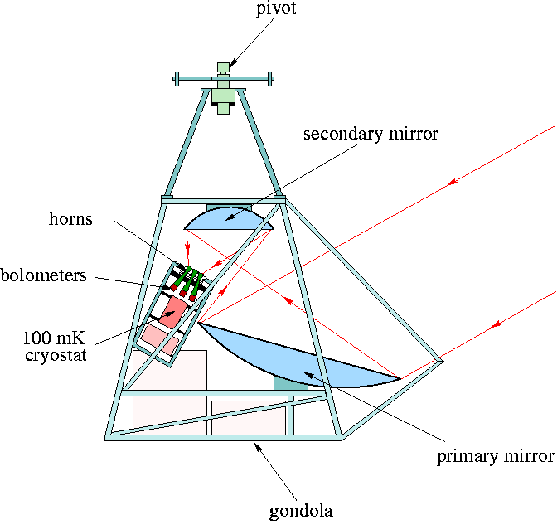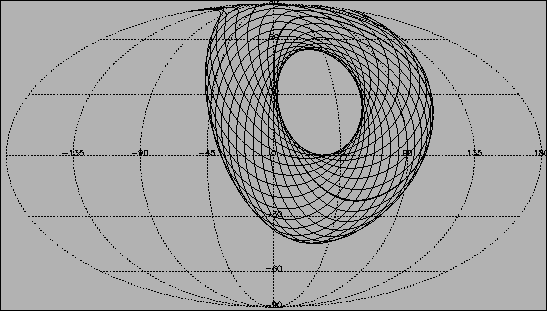


Next: Cryostat, bolometers and cold
Up: Archeops instrument
Previous: Archeops instrument
The Archeops telescope is an off-axis Gregorian telescope with a 1.5
meter primary mirror that looks at 41 degrees of elevation. During the
flight, the gondola rotates at 2 rounds per minute around its vertical
axis and therefore performs scans on the sky at constant elevation.
While the Earth rotates, these scans end up forming a wide annulus on
the sky with scans crossing each other at various time scales allowing
an efficient monitoring of systematic signals. The gondola is shown in
Figure ![[*]](file:/usr/lib/latex2html/icons/crossref.png) and the scanning strategy in
Figure
and the scanning strategy in
Figure ![[*]](file:/usr/lib/latex2html/icons/crossref.png) . The gondola is hanged below a stratospheric
balloon that floats at an altitude of around 40 km. The data is taken
during 24 hours nighttime winter arctic flights.
. The gondola is hanged below a stratospheric
balloon that floats at an altitude of around 40 km. The data is taken
during 24 hours nighttime winter arctic flights.
Figure:
Schematic view of the Archeops gondola. The telescope observes at
41 degrees of elevation and rotates at 2 rounds per minute.
 |
Figure:
Scanning strategy on the sky (Molleweide projection): a circle
is plotted every hour. After 24 hours, the covered region has the
shape of an annulus.
 |



Next: Cryostat, bolometers and cold
Up: Archeops instrument
Previous: Archeops instrument
Jean-Christophe Hamilton ISN
2001-12-01


